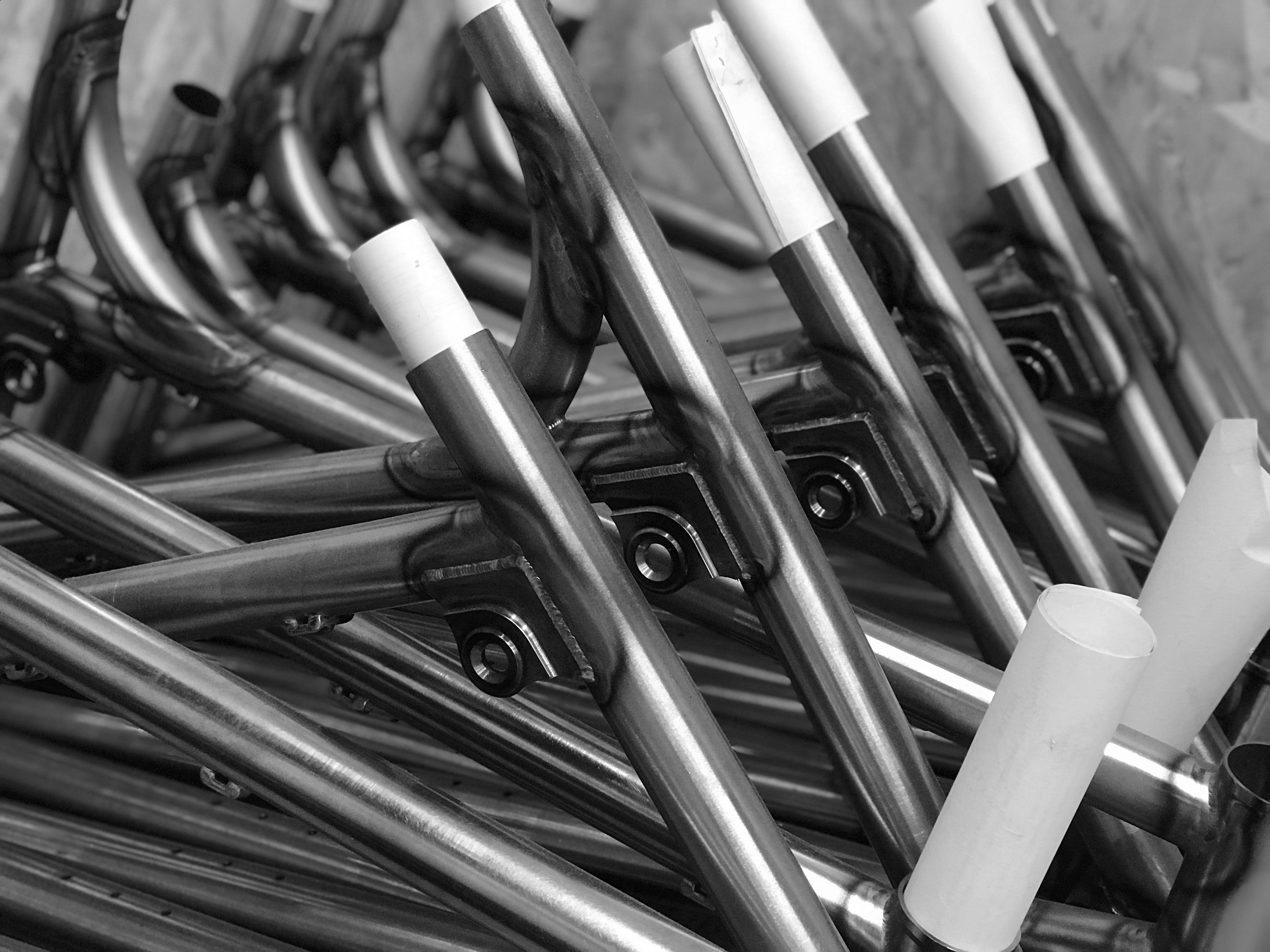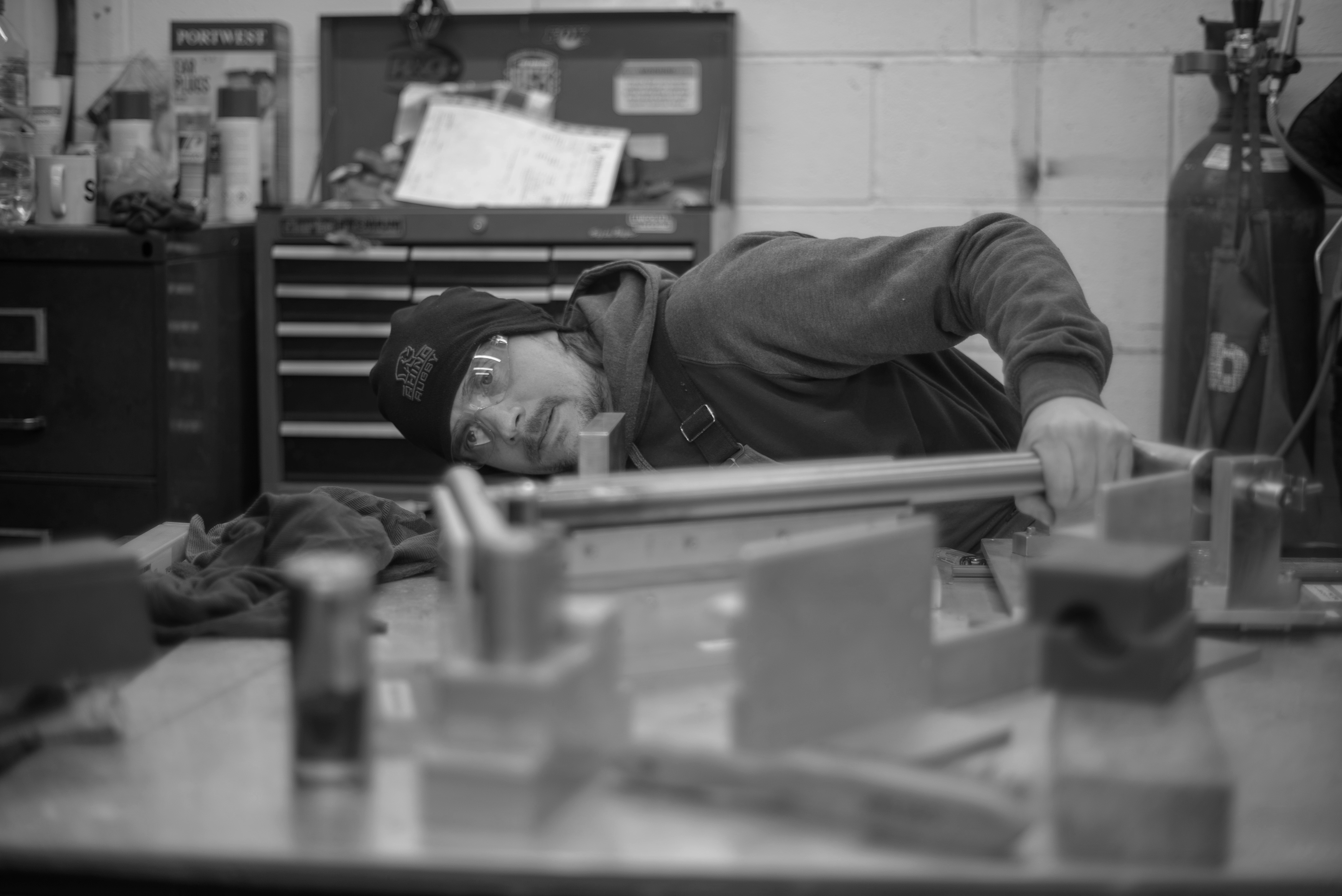Welcome to Benji, our new Technical Content Manager. He has opinions and he’s not afraid to share them.
As the person who’s just been hired to be In Charge Of All Things Tech at Singletrackworld I probably shouldn’t be saying this, but… I don’t know much about flex on mountain bikes. Well, maybe I don’t know much, but I have an awful lot of suspicions.
It could be worse. I could be a road bike journalist where pretty much the only thing to talk about is frame flex. Seriously, how do road journos keep writing (with a straight face, and without yawning) about vertical compliance and lateral stiffness? And, more seriously, why does the general roadie public keep reading about it?
Anyway. Cutting to the chase, I don’t think bike frames flex vertically. At all. Saddle rails do. Hey, even chamois liners do. But bike frames don’t flex vertically.
Latest Singletrack Merch
Buying and wearing our sustainable merch is another great way to support Singletrack
And neither do wheels.

The one and only thing flexing up and down on a mountain bike is the handlebar. And they can flex a surprising amount. That’s because they aren’t part of the structure. They are essentially diving boards sticking out of the side of your stem. Oh, and the tyres. Tyres flex up and down. And side to side. And fore-aft. And in pretty much any plane you can think of.
So what exactly is happening when people say that the back end of a (hardtail) mountain bike is ‘harsh’?
I don’t know. My best theory/guess at the moment is that it’s the two longest tubes on a mountain that are having an effect: the top tube and the down tube. I don’t think that the front triangle is flexing vertically. Again, tubes in a structure. Trusses. They don’t flex vertically. But there is some lateral give present there.
Fundamentally almost nothing on a mountain bike flexes vertically. But… almost everything on a mountain bike flexes laterally (or even fore-aft). Wheels, forks, frames, seatposts, cranks, bottom brackets. Almost everything.
Remember URT (Unified Rear Triangle) suspension bikes? Where the BB was part of the rear swingarm? They were completely insane weren’t they? Well, other than for folk who only wanted suspension when they were sitting down.
You can think of hardtails as like micro-URTs. But they are micro-URTs that only move laterally side to side. Ignoring the multi-flex of all the parts attached to a bike frame, I think it’s the lateral flex of the front triangle that exhibits any kind of ‘stiffness’ the rider feels.
The key thing to remember is that mountain bikes spend a lot of their time not being bang upright in a vertical plane. They also spend a lot of time not going forward in a perfectly straight line; the ground comes at them from all sides and the idiot on top of the bike is similarly pushing and pulling it all over the place.

A frame’s ability or inability to flex a few millimetres side to side during the noble, but frantic, art of riding along a trail is where anything commonly called ‘flex’ or ‘stiffness’ comes from.
On a side note, the front triangle of a bike is not actually a triangle. It’s made up of four tubes (top, down, seat and head). It’s a quadrilateral. Quadrilaterals aren’t as stiff as triangles. There is some movement for… er, movement in a front ‘triangle’.
If a hardtail (or indeed road bike) has a fat front triangle and chunky BB area it’s going to be stiff. I don’t care what sort of jiggery-pokery people do with skinny or flattened stays. Triangles don’t flex vertically. Sorry, road journalists.
Even when landing a jump (which appears to be a very bang upright vertical plane type of event) and a bike feels stiff, this is because that particular ‘stiff’ bike frame has no give in the frame laterally. There’s nowhere for the impact of the energy to be dissipated slightly by some side to-side movement at the BB.
I think.
“But what about flex-stays on cross-country pain wagons?” you may reasonably ask. They aren’t part of a fixed truss triangle thing. They’re attached to a moving linkage or a moving shock body. So they can flex.
Or at least, I think that’s what’s happening. (Shall I mention quadrilaterals again?)
I didn’t do physics or engineering at school. I did Literature. Cue eye-rolling and tutting from all those already exasperated with bike-media-engineering-professionals. At least I’m interested, cynical and inquiring though eh? And thinking.
Stating that there’s no such thing as vertical compliance on a bicycle is tantamount to heresy in the bike journo illuminati. It is total codswallop though isn’t it?
Also, what about full suspension bikes?
Also, also, do we actually want a mountain bike to be stiff?
One of the more interesting things to happen in the world of testing mountain bikes was when Dirt magazine (RIP) had a go on a steel-framed full suspension bike. Essentially it blew their minds with how calm and compliant – and fast – it was. The bike in question was a Starling Murmur. It’s safe to say that Dirt magazine’s review of the Murmur pretty much put Starling on the mountain biking map.
The Murmur was (and still is) a bike with quite un-tall front and rear triangles, but relatively long and skinny front and rear triangles. Basically, very basically, the Murmur was able to flex laterally and this made a significant difference when riding it across real-world terrain. ‘Real world’ as in three-dimensional (can we add a fourth dimension of ‘speed’, or is that straying too far into pseudo-science?)
The point being, a flexy mountain bike appeared to be A Good Thing.
Can you have too much of A Good Thing? Thankfully, for my future employment and career, the answer is yes. Too much flex can be undesirable. On a full suspension bike anyway. Hardtails could – and arguably should – be a whole load more laterally flexy than they currently are.
Even if it has pretty limitless appeal and benefit from a comfort and 3D ground-compliance point of view, on a full suspension bike frame there comes a point where stresses are being transposed into parts of the bike that aren’t suited to it. Namely, shock mounts, linkage bearings and shock bodies.
A mountain bike that flexes side to side too indiscriminately will bend enough to bind shock bushings and linkage bearings. This is one reason shock bolts and linkage bolts can unwind themselves.
Clearly there is a balancing act. Full suspension mountain bikes can definitely be too stiff laterally. I’ve ridden stiff bikes that were a nightmare to keep on an intended line. Paired with silly-stiff 35mm diameter handlebars it was not a fun experience even though the bike (and bars) were behaving exactly how their respective designers intended them to.
I’ve rarely encountered a full suspension bike that had too much lateral flex. On the contrary, some of the ‘best’ (another classic vague non-engineering term) mountain bikes I’ve ridden have been flexy AF.
I’m sure they weren’t deliberately designed to be flexy, but bikes like the old Orange ST4 and the noughties era Commencal Meta bikes were absolutely brilliant to ride. And not in a comedy ‘woah-woah-woah!’ bucking bronco sense. They were just sinuously grippy buggers that rode everything you threw at them.
With all this in mind, who’s going to be the first to make a steel front triangle mountain bike with a cast aluminium swingarm? Chris Porter probably had one in 2007.
Speaking of which. Here’s what Chris Porter (of GeoMetron Bikes) has to say about mountain bike frame flex…
“Adding frame flex is exactly what we did when [designing the first GeoMetron bikes] and added longer front tubes and rear stays. The extra downtube length was such that we ran out of long enough available downtubes (we had to get new ones extruded longer). We then added stiffness back in one step at a time. Firstly by widening the swingarm bearing spacing and reducing the flex from the horseshoe part of the swingarm and then with the redesign we also added the DH-sized downtube just with a tad less wall thickness.
“We’ve done quite a lot of testing flex backwards and forwards but here are my thoughts … Although we don’t get MotoGP levels of lean angle [we do] need the tyre and wheel to move laterally across the bike to absorb ‘bumps’. We do get a lot of inputs from a lot of angles.
“We found that when we went to spherical eyelet bearings in the G1 it really improved how well the bike worked at the limit where you are normally fighting inputs from an overloaded tyre or a flexing frame or wheel. It just carried on absorbing in the suspension.
“My view of frame flex is that it is desirable to a certain extent in an off-road bicycle. The extent is the debate. Someone riding wet off-cambers will want a different flex characteristic than someone riding 4X or someone riding the Dyfi Hardline.
“Like everything on a bicycle it’s all about degrees. Some things will work better in some places and some things worse.”
My job is safe once more.





